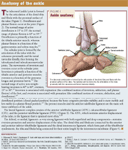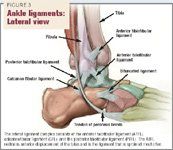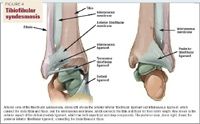Ankle sprains in young athletes Part 1: How to evaluate
The sports injury you're most likely to see is an ankle sprain. The first part of this article reviews how to assess the type and severity of the damage and when to order imaging studies.
DR. PATEL is professor of pediatrics and human development, Michigan State University College of Human Medicine and Kalamazoo Center for Medical Studies, Kalamazoo.
MS. JANISKI is a graduate assistant in the athletic training program, sports medicine clinic, Western Michigan University, Kalamazoo.
The authors have nothing to disclose in regard to affiliations with, or financial interests in, any organization that may have an interest in any part of this article.

The exact prevalence of ankle ligament sprains in young children is unknown; children are more likely to injure the relatively weaker growth plates around the ankle-the distal fibular physis in the case of an inversion injury-than to sprain a ligament.4 Ankle injuries occur more often in sports involving jumping, running, and sudden change in direction. The highest prevalence has been reported in basketball, followed by volleyball, soccer, and gymnastics.2,5 A history of previous ankle sprain is the most important risk factor for a subsequent sprain. Other risk factors include tarsal coalition, a tight Achilles tendon, laxity of ankle ligaments, weak peronei muscles, and wearing low-profile boots or narrow, long cleats.2,5,6
Assessing ankle sprains


